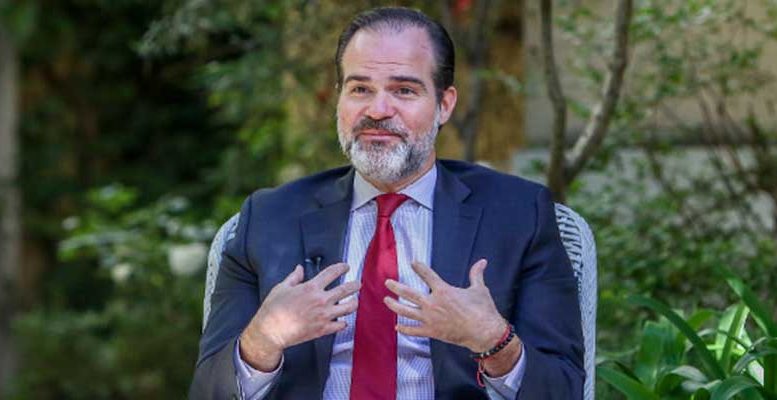Pablo Pardo (Washington) | Since October 2020, the largest development agency in the Americas, the Inter-American Development Bank (IDB) has had at its helm a person who grew up in Madrid, Mauricio Claver-Carone, the first American to head the institution. He was director for the Americas at the National Security Council during Donald Trump’s presidency. And Claver-Carone has set himself the goal of making Latin America accelerate its growth, making it more inclusive with the help of private capital, a strategy that clashes with the political situation in several countries in the region.
Q: What is the presence of Spanish companies in Latin America and the Caribbean today?
B: Last year Spanish investment in the region fell by 20%. This was largely due to Covid, but the truth is that it had been falling at a rate of almost 2% for the last ten years. This worries me, because the dynamics of Spanish companies are increasingly global, and this may reduce their interest in Latin America. This is something that fills me with pride as the son of a Spaniard, but it could become a problem for the region. It is one of the reasons why I went to Madrid.
Q: What exactly do you mean by that?
A: That I am concerned that Spanish companies may not see Latin America as a starting point for their internationalisation, but as just another market. Twenty years ago, Spanish companies went to Latin America because they had a number of elements in common with the region – starting with the language – which made it easier for them to enter it. Today, however, they can choose to go to Latin America, to other countries in Europe, to the United States… Who have built the telephone networks in Germany? Spanish companies. Who are amongst the leaders in renewable energies in the USA? Spanish companies. This also creates a need for Latin Americans, who cannot count on Spanish investment as something guaranteed. Spanish companies are already looking at the whole world, not just Latin America. This should be an incentive for Latin America and the Caribbean to become an even more attractive market.
Q: The IDB talks about hedging, but only for currency risks. Or is it also for political risk?
A: In our meetings with companies and other counterparts, we have seen a lot of demand for the IDB to create a kind of MIGA (the World Bank agency that offers investment guarantees against economic and political risks). One of the biggest challenges in attracting investment to the region is political risk. Companies, when they make an investment decision, need to have a ten-year perspective of stability. And now it turns out that firms are encountering volatility in countries where they never thought there would be volatility, such as Chile. There are some companies that have left Latin America because of currency risk. We are already mitigating the risk and hedging currency, and we will soon create an instrument for political risk issues.
Q: You have insisted on many occasions that you do not want this to be another ‘lost decade’ for Latin America, and that you expect the region’s commodity revenues to be used effectively. How do we know that will happen?
A: Because Covid-19 highlighted the region’s lack of investment in infrastructure and, dramatically, the shortage of health infrastructure. Latin America is the region with the largest infrastructure gaps in the world. We need more than $180 billion a year in investment. And this has been felt in the pandemic, which has made it the region with the most deaths in the world in relation to its population. Spending the resources which have been obtained will not satisfy the citizens of the region, who want more services and infrastructure. In Latin America there are 50 million people who have joined the middle class, who are sophisticated, and who cannot be content with short-term investment. And there is also another opportunity: digitalisation. Recently, at a road show, I spoke to the president of one of the largest private equity firms in the world, who told me: “We knew the IDB for building bridges and roads, and as the lender of last resort in the region”. Now, at the IDB, we are focusing on digital infrastructure: what used to connect a bridge that took five years to build can now be achieved with a digital network that takes five weeks to build. And the digitisation of governments is key. This is an IDB that is not a lender of last resort, but develops investment projects with economic actors.





